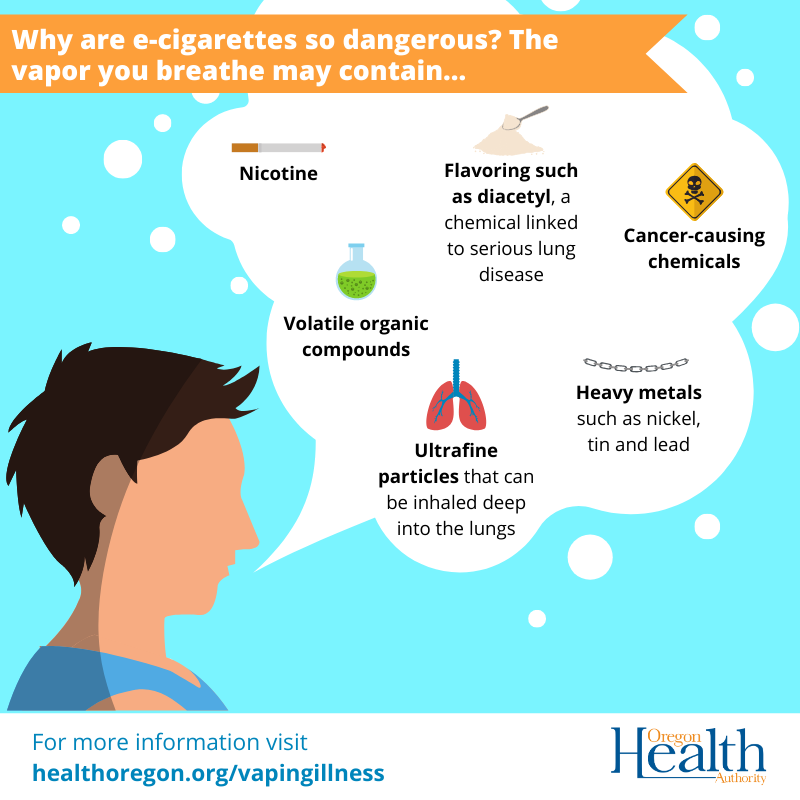E-Cigarettes and Vaping
E-cigarettes create dangerous liquid vapor, cause injuries
An e-cigarette is a battery-operated device that heats liquid into an aerosol that the user inhales. The devices come in various shapes and sizes and are known by different names including “e-cigs” and “vapes.” Using an e-cigarette is sometimes called “vaping.” The e-cigarette is typically reusable with new cartridges or liquid refills depending on the brand and model. E-cigarettes typically operate on a rechargeable lithium-ion battery. Vapes can also be used with marijuana or tetrahydrocannabinol (THC). 'Pod-mod' style vape products are similar in shape and size to JUUL® and other vape sticks but are disposable.

Why are we concerned about e-cigarettes and vaping? In short, the ingredients in e-cigarette liquid have caused users health problems. The health effects of e-cigarettes are still being studied but nicotine addiction, harmful chemical additives, battery explosions causing injury, acute nicotine poisoning and vaping related lung injury have all been linked to use of e-cigarettes and vaping.
Most e-cigarettes contain nicotine and their repeated use can lead to nicotine addiction or increase the user's risk of addiction. Some e-cigarette brands contain nicotine salts to mask the harshness of nicotine and make it more palatable. As of 2018, all tobacco products must bear the required nicotine addictiveness warning statement on product packages and advertisements in order to warn consumers about the presence of and addictive nature of nicotine.
The vapor produced by e-cigarettes usually contains nicotine, heavy metals, volatile organic compounds, cancer causing chemicals (carcinogens), and in some cases, flavoring linked to serious lung disease. These and other harmful substances present in e-cigarette vapor can negatively affect the respiratory health of users.
Vape pen and e-cigarette explosions from overheated, defective and/or modified device batteries have occurred, causing injury and serious health problems to users. Learn more about how to avoid vape battery explosions from the FDA or download the FDA's tips for avoiding battery explosions.
Poisoning from nicotine and e-cigarette liquid can occur by drinking it, spilling it on the skin, and breathing too much vapor. Cases of accidental eye exposure have also been reported as refill bottles are similar to commercially available eye dropper bottles used for therapeutic eye drops. Review our poison prevention tips below.
Prevent poisonings from e-cigarettes
Prevent accidental poisoning from e-cigarettes and vape products. Store these products safely to protect yourself and any children in and around the home from accidental exposure.
- Store e-cigarette products and refills separately from any medications, eye drops and food.
- Always store e-cigarette products and refills up, away and out of sight of kids. Because these products may smell or look like kid-friendly foods, they may be especially tempting to touch or taste.
- Do not repackage refill liquid into drinking bottles or cups. This increases the risk of accidents and swallowing the liquid by mistake.
- Use caution when refilling or handling liquids. Wash your hands with soap and water and clean up any spills immediately.
- Call the poison center in case of exposure 1-800-222-1222